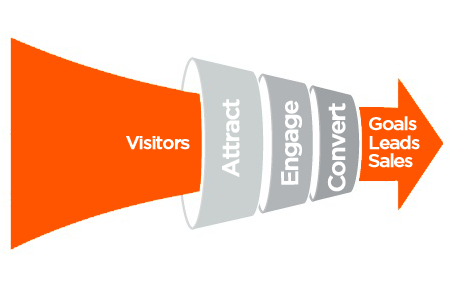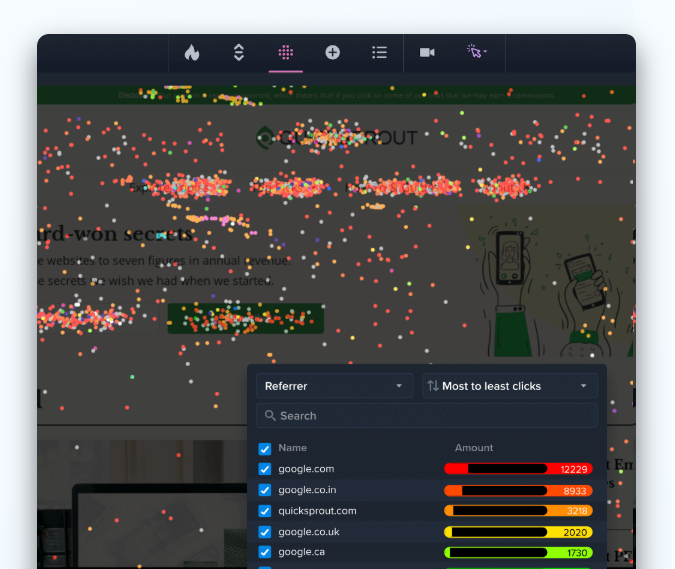Traffic used to be the Holy Grail of digital marketing. But as time passed, many marketers—myself included—realized the focus of marketing campaigns should be on conversions.
Sure, traffic is still important. But you could have hundreds of thousands of visitors to your site, but it won’t matter if none of them are making a purchase, signing up for your newsletter, registering as a member, or whatever conversion goals you have set.
Why the big emphasis on conversion rate optimization?
CRO is all about helping you do the following:
- Increasing sales
- Increasing your email subscribers list
- Boosting your popularity
- Branding
- Carving a reputation amongst your competition
These are the results—known as conversions—you get by paying as much attention to CRO as you do to SEO.
In truth, SEO and CRO should go hand in hand, as they form a symbiotic relationship that lets you achieve your business goals. You need traffic before you can worry about conversions, and that’s where SEO comes in. Conversely, SEO on its own can only do so much in terms of turning visitors into customers, which is where CRO comes into play.
As such, it comes as no surprise why investments in conversion rate optimization tools and services are increasing at pace. But how much one should spend on CRO is a question still debated among website conversion specialists and business owners alike.
One thing’s for sure though, I, along with several other specialists, agree that businesses and other organizations looking to improve their conversion rates should invest more in CRO than they currently do.
Should you even pay for conversion rate optimization?
Everyone knows time and money are critical to any online marketing campaign and building a successful online business. CRO in particular needs more of both, as it’s not enough to just attract visitors — you also need to find a way to sustain their visits and move them down the sales funnel.

Source
To do that, you need invest in the following components of CRO:
- Investing in creating quality content
- Improving your calls to action (CTAs)
- Fixing your website’s structure to make it have a logical flow
- Communicating your unique value proposition
- Make order pages easy to use
That being said, you’d probably think businesses would immediately jump in the CRO bandwagon and call it a day. But that’s not quite the case.
A 2013 survey commissioned by Adobe, entitled the Digital Marketing Optimization Survey, with analysis handled by Econsultancy, shows that a majority of companies in the survey (53 percent of respondents) spend less than 5 percent of their entire marketing budgets on conversion optimization activities.
Why is this happening, especially when you consider that small incremental increases in conversion rates pretty much lead to an increase of revenue in the millions?
A survey by Trust Radius in 2014 shows higher figures in terms of CRO investment.
The study found:
- 58 percent of companies spend more than $10,000 on some kind of web analytics products on an annual basis. 27 percent spend between $50,000 and $500,000, and 6 percent over $500,000.
- 44 percent of companies surveyed spend more than $10,000 a year for A/B testing products. 19 percent spend over $50,000 annually on these tools.
- 59 percent of companies expect to spend more on web analytics tools. Among larger businesses, 67 percent will spend more.
- 48 percent expect to spend more on A/B testing tools. Among larger businesses, 60 percent will spend more.
CRO is a major investment with major returns.
As for deciding how much to pay and which CRO products and services to pay for, I encourage you to think of your efforts in terms of ROI.
For example, you have a landing page with a conversion rate of 10 percent. Contrary to what many people think, the solution to improving this figure is NOT increasing traffic; you’d get more traffic by spending more on SEO products and services, but your conversion rate will remain the same at the end of the day.
On the other hand, if you were to increase spending on CRO through tools and consultation services, you may be able to increase your conversion rate to 13 percent, maybe even 20 percent. Of course, you’ll have to incur the cost of any CRO tools and services conversion experts provide, but the returns of improved conversion rates ultimately pay for themselves and last for a long time.
So, how much should you spend on conversion rate optimization?
So how much of your monthly marketing budget should you allocate to conversion rate optimization?
I tend to spend more than most. Why do I spend so much? Because I get so much in return.
According to web analytics leader, Omniture, you can get a 25 percent lift in your conversion rate by using a campaign-specific, standalone landing page over just sending your visitors to the homepage. So, let’s imagine that we’re aiming for a 25 percent improvement to your conversion rate, and let’s assume we have a playing monthly budget of $10,000 for all your marketing campaigns.
Before anything else, it’s important to remember the one goal of conversion rate optimization is to reduce your cost per acquisition, or CPA. You do so by taking a portion of your monthly marketing spend, and using it to pay for CRO products or services geared towards improving your conversion rate. In other words, you’re not spending money to look for additional customers. You’re looking to convert your current visitors (acquired through your existing marketing campaigns) into paying customers.
Unbounce offers a terrific breakdown on calculating your ROI on conversion optimization, showing what happens when you take the portion of your budget allocated for generating traffic (in this case PPC, but it can also be SEO), and put it into improving your conversion rate through a variety of optimization techniques.

- In their first example, the campaign budget of $10,000 is spent entirely on PPC, with a CPA of $40.00 (based on a Google AdWords CPC of $0.40), 25,000 monthly visitors, a conversion rate of 1.00 percent, and 250 new customers.
- Now, look at what happens when 10 percent of that budget is spent on CRO. You have fewer visitors (22,500), but you also have a lower CPA of $35.56, an increase to 281.25 customers, and a conversion rate of 1.25 percent.
- Using 20 percent of the budget for CRO further increases the conversion rate to 1.75 percent and decreases the CPA to $33.33, while giving you 20,000 visitors.
- If you increase your CRO budget by 30 percent, you get fewer visitors (17,500) but also have a conversion rate of 1.75 percent, more customers at 306.25, and a lower CPA of $32.65.
- But Unbounce’s table also has a point of diminishing returns. In their example, if you spend $4000 on CRO, you have a CRO of 2.00 percent, but CPA begins rises once more to $33.33.
In other words, 30 percent of your marketing budget is the sweet spot for conversion rate optimization, a point echoed by SEO company, Positronic Design.
What should you be spending on with your conversion optimization budget?

The list of CRO tools that offer any value for your efforts is practically limitless. Some of the free tools offer basic features that should help you get started, while other premium tools offer advanced features that make them worth the money. Medium offers a comprehensive list of great CRO tools, categorized into:
- Quantitative tools (The What)
- Qualitative tools (The Why)
- Testing tools (How and When)
- Workflow tools (Learning)
As for services, I like to refer to Positronic Design’s general outline:
1. Website Audit
Audit services for improving conversion rates will largely depend on whom you hire. Some companies charge by the hour, some will give you fixed price for the entire audit. This service will start with an overview of the current state of your website and aspects you can begin optimizing. You can also expect to be briefed about best CRO practices, and get a recommendation of actions you can take to improve your conversion rate and what impact these changes will make on your revenue.
2. Building and Tweaking of Landing Pages
If you have a new site with no landing pages, conversion experts can take care of the dirty work of creating and designing new landing pages.
Before this happens, the provider will first conduct an evaluation of your industry and market to understand your target audience. They will then proceed to create the appropriate content for the landing pages, build the actual pages themselves, and finally, then deploy them.
3. Landing Page Optimization
If on the other hand, you have a website with existing landing pages, you can have them optimized instead to maximize their ability to generate conversions. These services will begin with an audit of your landing pages, recommendations of changes, deployment, and testing to track performance of different landing page designs.
4. Complete Optimization Package (Entire Website)
This service involves optimizing your entire website, from the landing pages, onsite content, navigation, page speeds, code, images, and color scheme among others. As you may have guessed, complete optimization packages tend to be the most expensive.
Conclusion
Conversion rate optimization obviously has a lot going for it, but you can only obtain real rewards if you do it with the right product solutions and the right team of experts.
If your goal is to have flexibility and healthier business metrics, such as higher revenues and lower cost-per-acquisitions rates, I recommend taking a good look at CRO solutions.
These solutions can range from CRO web apps and tools like heatmaps, to a full suite of consulting services such as landing page optimization and A/B testing.
Some of these solutions are manual in nature, requiring hands-on work (taking time and effort) while others have fully automated features (costing a substantial amount of money).
If your marketing budget prevents you from investing in too many things at once, I would recommend investing in building traffic first (through SEO), and once that’s done you can proceed by dedicating a good portion of your budget to CRO.
What about you? How much are you spending on your conversion rate optimization efforts, and are your efforts yielding any results?




